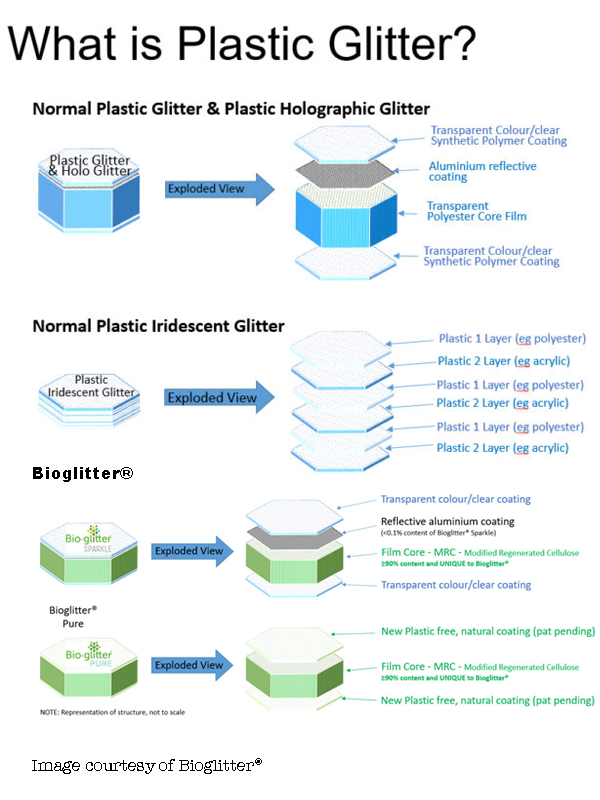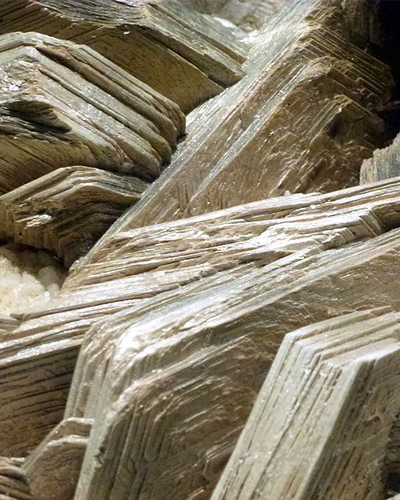There are two main kinds of biodegradable glitter makeup that is actually biodegradable, cellulose and mica. Go further into depth below.
There are two kinds of biodegradable glitter to be aware of, plant based and mineral based. Cellulose glitter is made from plants, usually eucalyptus or bamboo. Mica glitter is made from crushed up rocks, or minerals. Both of them are biodegradable. So they will not remain on the Earth for thousands of years after we die, and possibly hurt a cute animal, like plastics do.
2 Types of Biodegradable Glitter
1. Cellulose

- Cellulose is a plant based glitter. It is made from cellulose derived from plants, such as eucalyptus, bamboo or others.
- Most of the companies selling biodegradable glitter are using Bioglitter® in their beauty products. The company is headquartered in Rochdale, England in the UK. Bioglitter® is a division of Ronald Britton Ltd. It was founded in 2010 when they realized that glitter could be a source of ocean micro plastic pollution. Today they are a leader in the industry.
- There are two kinds of Bioglitter®. SPARKLE has a tiny percentage of plastic materials on the coating, as is illustrated in the chart above. But it is more sparkly. PURE is 100% not plastic and has an experimental natural coating that is not quite as shiny as the SPARKLE.
2. Mica

- Mica is a mineral based compound used as an ingredient in makeup and beauty products. It is defined as a shiny silicate mineral with a layered structure, found as minute scales in granite and other rocks, or as crystals. Google notes it is used as a thermal or electrical insulator.
- Mica has been around for a long time. There are a lot of different suppliers that provide it.
- Mica is an ingredient of many of your favorite products, including bronzer, highlighter, luminizer, eyeshadow and sun lotion.
- Not all mica is shiny. In fact most of it is not. Only certain, special types of mica will be shiny enough to have cosmetic applications.
- According to Just Pigments, there are two types of mica used for cosmetics. The first is all natural mica powder. The second is Synthetic Flourphogopite.
Is my glitter biodegradable?
If you want environmentally friendly glitter, be sure to check the ingredients. If it has any type of plastic in there, which is usually poly-something*, then it is not biodegradable. Some unscrupulous merchants have been known to label regular glitter as biodegradable, like it is just a keyword. Biodegradable glitter is a new idea, so there are not a lot of legal regulations about it.
- There are seven types of plastic: Polyethylene Terephthalate, High-Density Polyethylene, Low-Density Polyethylene, Polypropylene, Polystyrene (Styrofoam), Polyvinyl, and more plastics.
Why is my glitter falling off?
To apply the biodegradable glitter it must be mixed with another substance that acts as an adhesive. Petroleum jelly can be used. It is a byproduct of oil refining, and technically petroleum is made from fossils. So it’s biodegradable too. Another option is organic oils such as olive, almond, jojoba, rosehip and more. And most cosmetic glitter companies have a glitter-adhesive product.
Cover image makeup by Gliterazzi.

